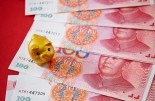NNIP: Significant property easing in China
NNIP: Significant property easing in China

Fears of recession and sticky inflation continue to concern investors, with stock markets falling to their lowest levels in 12 months over the past week. Credit markets have fallen even more sharply, approaching their lows in the March 2020 coronavirus-induced market panic.
Meanwhile, Treasury and Bund yields rose further. High inflation and hawkish comments by Fed and ECB governors mean the markets do not expect monetary policy to be relaxed despite the pressure on economic growth. De-escalation of the war in Ukraine still seems a long way off, making a swift normalization of global energy and food supplies unlikely.
China’s zero-Covid policies mean that mobility restrictions are only likely to be removed slowly, despite a sharp improvement in infection data. Weak Chinese consumption and production figures in April have led to further downgrades for Chinese and global growth expectations. Against this backdrop, our multi-asset model portfolio remains cautiously positioned.
The Chinese authorities act to stop the rot
Despite clear indications that April activity data in China would be weak due to the lockdowns in Shanghai and several other key cities and regions, the actual figures were still bad enough to cause a new flare-up in global growth concerns. Investors fear that Chinese growth will remain weak for some time as the authorities are showing little inclination to relax their zero-tolerance approach to Covid. Chinese retail sales were down 11% in April, while industrial production fell by 3%
It’s interesting to note that these figures are not as bad as those in January and February 2020 – the early months of the coronavirus outbreak in China. This suggests that the authorities are better equipped to deal with the health crisis now than they were back then. In contrast, however, supply chain problems are now worse than in 2020, while unemployment rose to 6.7% in April, well above the 2020 peak of 5.9%.
The main difference in China now from two years ago is that the ongoing real estate crisis is having a large additional impact on activity – both direct, via a sharp decline in property transactions and construction activity, and indirect, via depressed consumer and business confidence. This is the main reason why credit demand remains low, despite the efforts of the central bank to encourage more bank lending. Most provinces have already eased property restrictions in recent months, and last week the People’s Bank of China also cut the mortgage floor rate for first-time home buyers.
This is the first time in the current crisis that the central government has directly supported the housing market. This move implies that from now on property easing will not only come from local authorities, but also from the government and the central bank. Given the dire state of the real estate sector, with new housing starts down by 44% year-on-year in April and new land sales for property development down by 57% (see figure), we should expect more easing steps directly aimed at the sector in the coming months.
The increased urgency in Beijing to promote a swift recovery in the housing market should be seen as a major positive development. It is likely to strengthen the economic recovery that should result from the easing of Covid-related mobility restrictions in the coming months. There is still considerable uncertainty about the end of these Covid policies, but infection rates are now coming down quickly, with the number of new cases having fallen by more than 90% since the peak in April. Lockdowns have already been eased in recent weeks and further relaxations can be expected in the short term.
This all means April probably represented the trough in Chinese economic growth. The recovery should be swift, similar to the second quarter of 2020, so we believe a growth rate close to 5% for 2022 remains within reach. Regulatory uncertainty, further problems for indebted real estate developers and slowing growth in global trade are still the main headwinds for Chinese growth.
A more cautious stance for our multi-asset model portfolio
Our multi-asset model portfolio has adopted a somewhat more cautious stance through an increased underweight in Eurozone corporate bonds. High inflation, which is primarily being driven by rising energy and food prices, combined with increasing concerns about growth represents a difficult macroeconomic backdrop for credit. What’s more, funding stress in European money markets is increasing.
As a result, we moved from a moderate underweight in Eurozone high yield to a large underweight and opened a moderate underweight in Eurozone investment grade. We remain neutrally positioned in US credit for now, but are considering moving underweight here too.
We maintain our moderate underweight in US Treasuries. So far, increasing risks to growth have not been reflected in Treasury prices. Market participants still believe that the Fed will persist with its hawkish policy stance. What’s more, concerns about growth have not yet led to a significant re-pricing of inflation forwards. It is clear, though, that the main risk to our underweight in Treasuries comes from growth concerns eventually forcing the Fed to hold back on its plans to normalize policy.
Meanwhile, the combination of slower growth and high inflation has taken its toll on the equity markets. Global equities have fallen by 15% so far this year, and it will be difficult for them to make up these losses in this kind of environment.
The overall earnings outlook is cloudy. Consensus expectations are still for 9% earnings growth over the next 12 months, driven by solid revenue growth, positive operational leverage and stable margins. But if inflation pressures persist, companies’ overall costs, including interest costs, will increase. This, combined with changing consumer behaviour due to their reduced purchasing power, will probably lead to lower revenue growth and margins.
The high degree of investor pessimism at present might reduce the downside risks somewhat. The bull/bear ratio, which measures US retail investor sentiment, is clearly in contrarian territory. The risk of recession is increasingly being priced in, as reflected by forward price/earnings ratios that have contracted by 30% and are currently below their 10-year average. If a recession does not materialize, there could be a meaningful market recovery. This is the main reason why we have not moved underweight in global equities.
We are sticking to our defensive stance within equities, with overweights in consumer staples and healthcare. Last week, we downgraded materials to neutral and upgraded energy to a moderate overweight, in line with our view on oil prices. We are keeping a negative bias towards secular growth sectors such as IT and communication services, which are most vulnerable to a further rise in real bond yields. At the regional level we remain underweight in the Eurozone. The risk of recession is higher in Europe than in the US, mainly due to the energy crisis caused by the war in Ukraine.
Due to the stress in the energy markets, we remain overweight in Brent crude oil.









